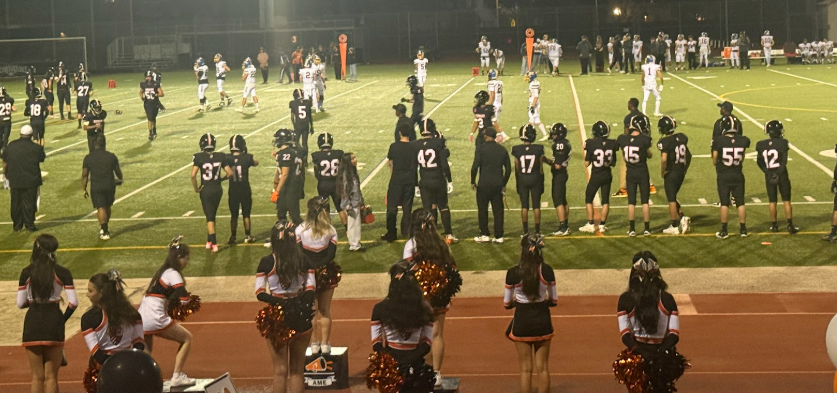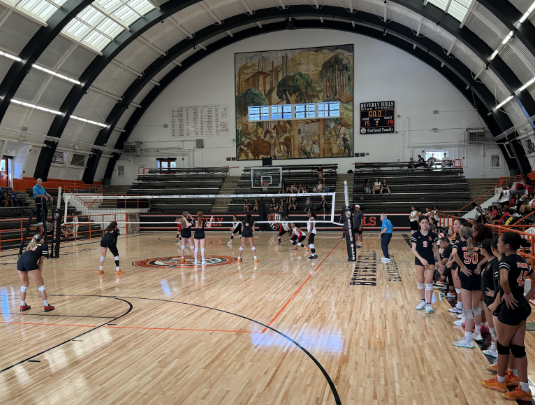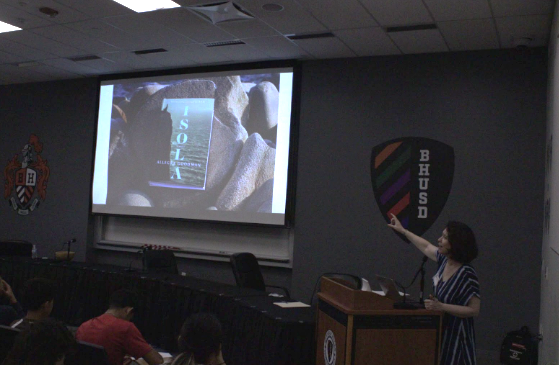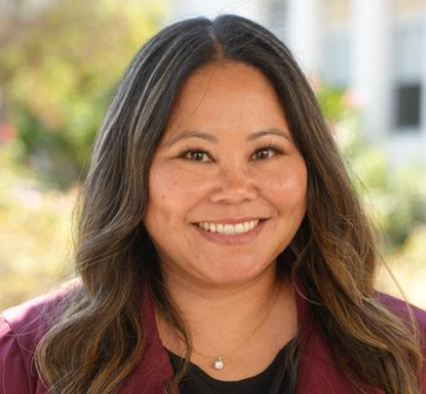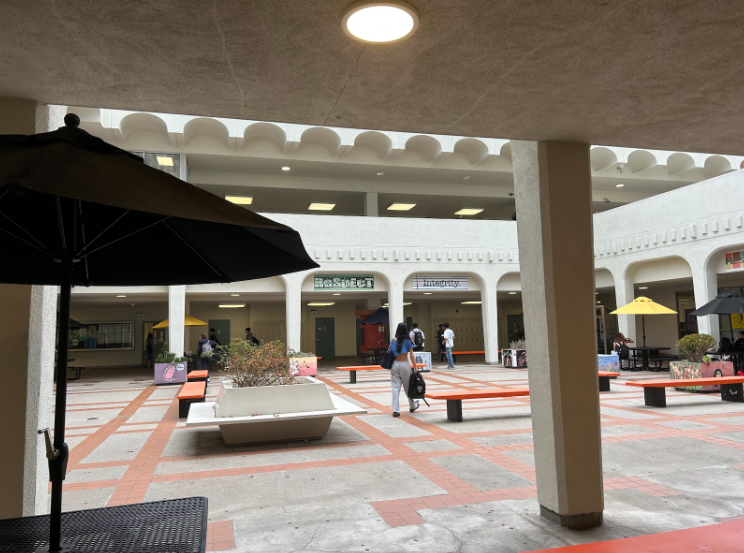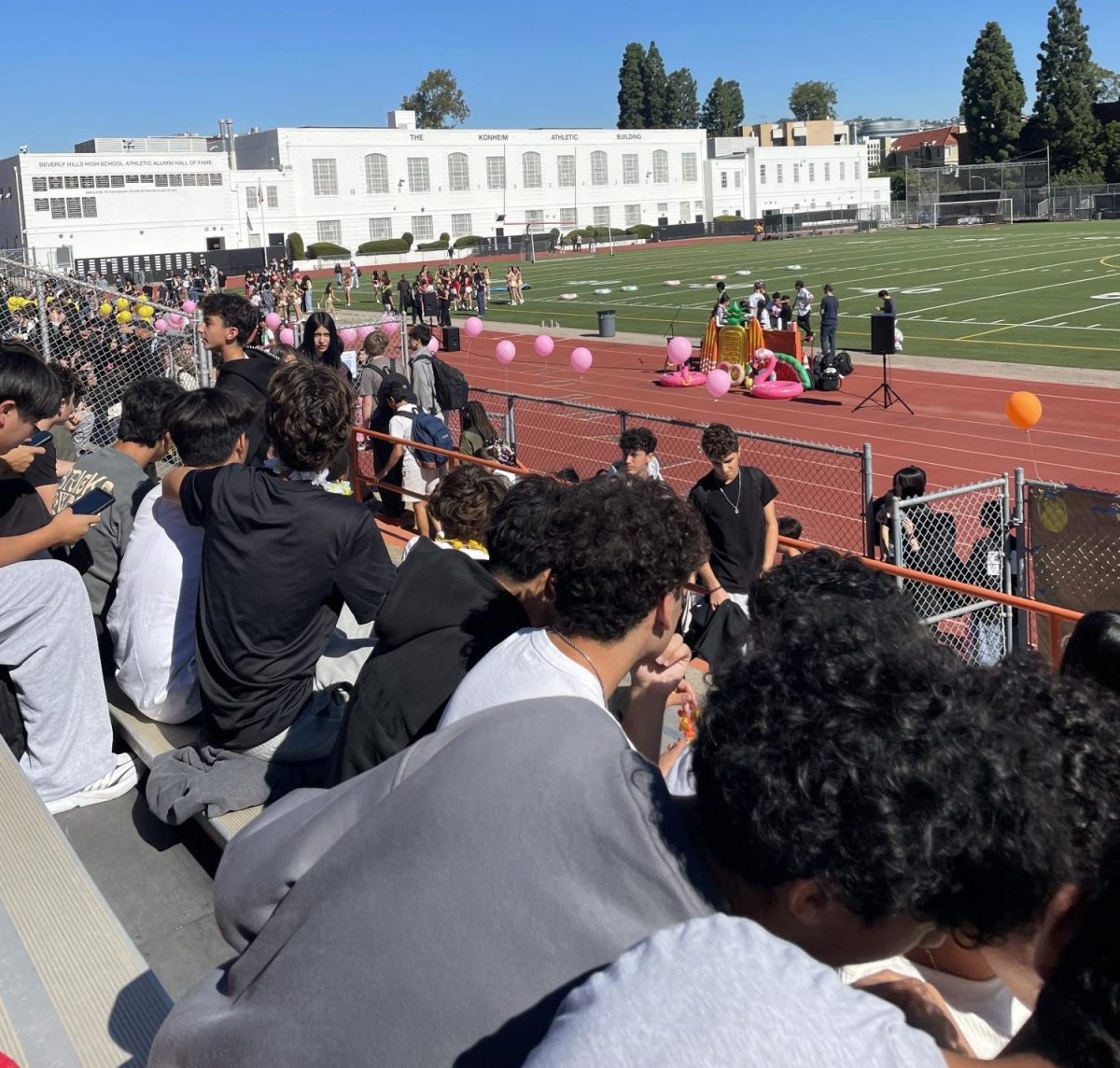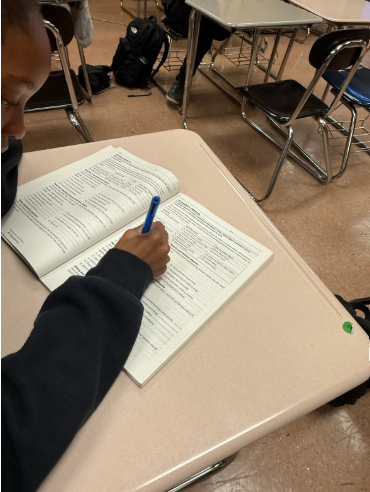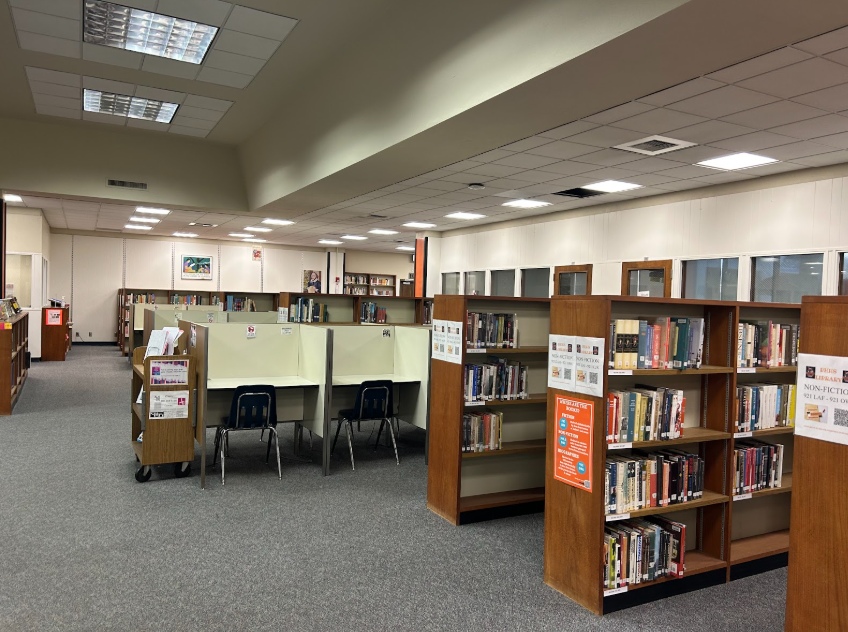Catherine Gagulashvili calendar manager
Sophia Goldberg sports editor
Desiree Gonzalez staff writer
Jamie Kim co-editor-in-chief
The necessity for textbook remains constant, yet the textbook content changes, and for a while, we have not been able to keep up with the ever changing nature of textbooks.
In an increasingly technological world, the district has tried to incorporate online components into new curriculum across departments, yet has fallen short in providing updated textbooks for all courses in a timely manner. The Williams case, a lawsuit filed in 2000, established that the California Department of Education would aim to provide public school students with equal access to instructional materials, safe and decent facilities, and qualified teachers.
As a result of the Williams case, the California Department of Education has proposed changes to the School Accountability Report Card (SARC) template that all schools must update and publish annually. The proposed changes will help all schools report the overall condition of their facilities, the number of teacher misalignments and vacant teacher positions, and the availability of textbooks or instructional materials. The proposed changes were submitted to the State Board of Education, which approved the changes at its meeting on November 9, 2004.
Having textbooks may seem a given to students, but the process of buying and updating them can get quite complicated.
How does the district acquire textbooks?
When textbook technician Marcela Chopchik notices a lack of resources for teachers to use, she can send a request to the district to order more of these books.
“I decide to buy, like say I need more novels, when I see that many teachers use the same book at the same time and we need more copies. I have to request first to see if there is enough money to buy the books, then I do the whole process by myself,” Chopchik said.
The other the district purchases new textbooks is when either a department chair, grade level specialist or middle school subject area specialist requests new book, or if there is a change in standards mandated by the state or Los Angeles County Office of Education.
“LACOE has adoption rules, the state has adoption rules, and our own district has adoption rules. It depends on when they reach cycle or if new state guidelines have been set,” Assistant Superintendent of Education Services Dustin Seeman said. “Part of our responsibility is to ensure that we are following up with the new state standards. There are no laws that say this can’t be used as a resource, because there are some great textbooks that can be used as a resource to teach from. It’s more of ‘are we maintaining and sustaining the updated curriculum that’s being developed?’”
 There is currently no exact budget allocated for textbooks, but rather, textbooks are acquired on a case-by-case basis.
There is currently no exact budget allocated for textbooks, but rather, textbooks are acquired on a case-by-case basis.
“We do not have an exact textbook budget since early 2000s due to the State level budget cuts in public education. We have a process set in [the district], where a subject department will put through a proposal for new textbooks that will go through an adoption committee,” Seeman said.
Recently, there have been several textbooks updates. In order to meet the new Common Core Standards, the district primarily focused on updating English and math textbooks at the K-8 level in 2015, but the process also included updated foreign language and social studies textbooks for Beverly. The updates were approved at the Aug. 11, 2015, board meeting.
“We moved forward with most of the budget as it is listed, including K-8 English, grades 9-12 Social Studies, Foreign Language, and we added some courses in high school math later,” former Chief Academic Officer Jennifer Tedford said. “There is no dedicated annual budget for adopting new textbooks, and so staff have to take a proposal to the board each time new books are adopted.”
Seemann plans to begin incorporating technology into curriculum, especially by selecting textbooks that have online components and supplementing textbooks with online resources. For example, Seemann is in the process of selecting a new statistics textbook, one that has one-to-one online components.
“Last year, our department chairs in math worked on a selection of a more updated textbook,” Seemann said. “Math is a perfect example. It’s not like the math has changed, but it is looking to see if there is an online option.”

 The budget for selecting new textbooks revolves mostly around student enrollment. The recent negative trend of enrollment over approximately the past five years has caused fluctuations in the amount of money allotted for new textbooks.
The budget for selecting new textbooks revolves mostly around student enrollment. The recent negative trend of enrollment over approximately the past five years has caused fluctuations in the amount of money allotted for new textbooks.
After moving into the new textbook room, Chopchik saw that many books were not cataloged in the system, meaning she must throw them away. Many of the unmoved textbooks consist of textbooks that had been used for only one year before a class got cancelled.
She has tried to find ways to either donate the older books to schools less fortunate or just recycle the books instead of throwing them away, but many schools she contacted could not accept the donations because the textbooks were so old. In total, Chopchik had to leave behind about 1,000 textbooks.
“The good thing about moves is to get rid of things you don’t need. But I was trying to donate the books or maybe recycle them, but I got no answer about any of the requests. I tried to contact the district; they said we cannot do anything. We’re not allowed to donate the books,” Chopchik said. “So by the time it was time to move, the only thing I was able to do was leave the books outside the room and move.”
Seeman said that the district was not able to donate or recycle any books due to state laws.
“The high school administration will provide the district office with a list of ‘old’ textbooks or books that need to be discarded. Once we have the list, we propose removal to the school board for approval. We can not donate or recycle textbooks because the State will not allow re-gifting of public funds,” Seeman said.
How have textbooks affected the learning environment?
Madame Corrine Carlson, French teacher and chair of the Foreign Language Department, believed new textbooks were long overdue. According to California Department Of Education, adoptions are conducted every eight years in the curriculum areas of English language arts, mathematics, science, history–social science, visual and performing arts, health, and world languages, but in this case, the foreign language textbooks had not been renewed for 12 years.
“It affected all of our teaching in two respects: some of the vocabulary was completely outdated. We were teaching these units about technology that were absolutely laughable because they had dialing phones, phone booths, old computers and post office things that were totally outdated,” Carlson said. “Some of the cultural things were about countries that no longer existed. For French, specifically, they talked about this one group that has since been outlawed because it became really, really violent and started killing people.”

 One advantage about the updated textbooks has been the added technological aspect, which aligns with the district’s push for more technology within classroom curriculum.
One advantage about the updated textbooks has been the added technological aspect, which aligns with the district’s push for more technology within classroom curriculum.
“The advantage that we had was we were essentially going from a traditional textbook to one that has digital accessibility, so because the district is pushing big time tech and it’s all about technology now, that was a big selling point,” Carlson said. “They’ve been encouraging teachers to use more and more technology in the classroom. This particular textbook was so conducive to that, I think that helped us in getting it.”
Sophomore Febe de la Peña, who is currently taking Spanish, believes the online access has helped her learn.
“My teacher shows us videos of the telehistorias and I think having visuals helps, since I’m a visual learner myself. It probably gets the idea across,” de la Peña said.
Sophomore Ava Dillard, who is currently taking French, also believes that the new language textbooks make learning easier for her.
“Having new French textbooks affects my grade because I feel more encouraged to learn when I know that my school and my teachers understand how important it is for students to have new textbooks. I enjoy learning more when I can use a new book, and I feel that my thoughts are more organized,” Dillard said.

 French and Spanish aren’t the only subjects that received updated textbooks; most sections of the History Department, including AP European History, AP United States History and AP United States Government, received new textbooks last school year.
French and Spanish aren’t the only subjects that received updated textbooks; most sections of the History Department, including AP European History, AP United States History and AP United States Government, received new textbooks last school year.
“[The new textbooks] affected my learning by giving me more understanding, more comprehension. Comparing with the older textbooks Mr. Van Rossum] has in his class, I think the newer textbooks we get are better than the older ones because of the new textbook’s order. I could find the information I need in the new textbook faster than the old textbook,” sophomore Justin Byun, an AP European History student, said.
However, some departments, like the science department, have not been so lucky. According to Honors Chemistry and AP Physics teacher Lisa Dickens, the AP Physics textbook was copyrighted in 2000, and the regular physics textbook was copyrighted in 1998.

 “It’s frustrating because I have no materials that go along with the textbook, like there’s a workbook that goes with it, there’s a lab book that goes with it, there’s a teacher book that goes with it, there’s a test bank that goes with it,” Dickens said. “Some of it doesn’t have as many things as the new textbooks have because it’s so old itself, but there are other materials that came with it, that nobody knows where they are or where I can find them or anything else. So some of it, I’ve been buying myself, when I can find it, but it has taken a lot to be able to find them because it’s so old.”
“It’s frustrating because I have no materials that go along with the textbook, like there’s a workbook that goes with it, there’s a lab book that goes with it, there’s a teacher book that goes with it, there’s a test bank that goes with it,” Dickens said. “Some of it doesn’t have as many things as the new textbooks have because it’s so old itself, but there are other materials that came with it, that nobody knows where they are or where I can find them or anything else. So some of it, I’ve been buying myself, when I can find it, but it has taken a lot to be able to find them because it’s so old.”
Dickens believes that having updated textbooks for her classes would benefit all of her students.
“[New textbooks] would definitely give me more opportunities. I mean, you know, being in my class, I do post things on my Jupiter Grades with like video clips from YouTube or wherever I can find them if I think it’ll be helpful to add to people’s learning. A lot of textbooks now have those kinds of things built into them, so it would be nice not to have to go and spend the time to look and see, because the things that I find don’t necessarily fit perfectly with what we do in this textbook,” Dickens said. “Whereas if we had the newer textbooks with all the peripheral materials that are designed for them, then it would be more specific to the book that we have, which I think would be easier for students.”
Categories:
District aims to update textbooks to align with state, local standards
October 23, 2017
0
Tags:
Donate to Highlights
$125
$1000
Contributed
Our Goal
Your donation will support the student journalists of Beverly Hills High School. Your contribution will allow us to purchase equipment and cover our annual website hosting costs.
More to Discover







